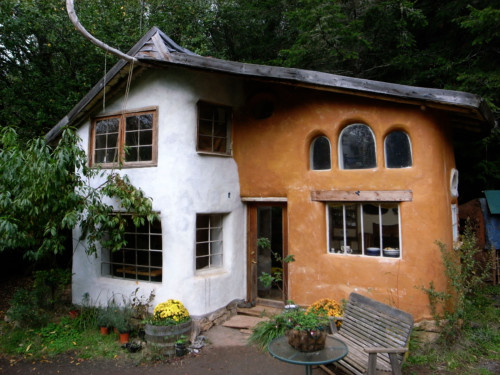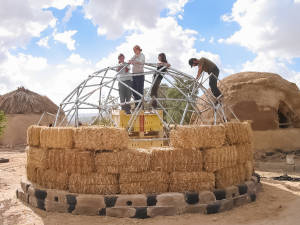How Sustainable Homes Around The World Are Paving the Way to The Future
When we think about sustainability, we often focus on water or waste, on power or biodiversity. We think about what we can do within our homes, or what we can do to adjust how we move from our home to other places, or what we can add to our homes to be more earth conscious. But less common is when we turn our focus to the home itself: what it is built from, how it is built, and what the environmental cost of its materials are.
Since the housing crisis in the mid-00s and with the rise of more mainstream Climate Change discussions upon us, there has been a growing interest in sustainable architecture, both from an economic and environmental vantage (though the two frequently go hand in hand from a long-term perspective). Communities across the world have sprung up in search of more equitable design; the tiny house movement gained immense traction as a reaction against the McMansions of earlier decades, and the dirt house movement has come in from the fringes.
Both the tiny house and earth house movement signal a paradigm shift away from the pre-fab, mortgage bound era, towards a more conscious, holistic understanding of how and where to live. Much like Garden Collage’s own mission, there is a desire to find practices that are stable, mindful, and close to Earth. For some it is a choice, like the Kibbutz Lotan community in Israel, which has built a neighborhood made of straw bales and mud. For others, it is a necessity, like the earthbags homes in earthquake ravaged Nepal, which employ a technique first developed by Iranian-American architect Nadir Khalili to create shock resistant structures. Regardless of origin, both embrace a kind of DIY approach to construction, reviving centuries-old crafts and returning them to the people, away from the profit-focused attitude of corporations.
In addition to the more “old school” approaches to construction mentioned above, the future of sustainable home building has been looking both to familiar materials (like using the endlessly regenerating bamboo to create truly magnificent homes) and to new technologies (like growing your own home— which you could then decorate with your own home grown furniture).
For those looking to learn more about this return to the earth for home materials, David Sheen’s 2009 “why-to” film First Earth remains prescient, tracing the different people across the world who are living in earthen homes, as they build anew the communities and villages of old. The website for the film boldly proclaims: “We need to think differently about house and home, for material and for spiritual reasons, both the personal and the political.”
Of course, giving up everything to live in a remote, hand-crafted home requires a certain financial stability and social privilege many don’t have. (Or it may be the idea doesn’t appeal to you at all.) In urban areas, there has been a similar movement towards sustainable architecture, though it is a decidedly less literal earth based approach and seems to seek out dazzlingly large scales rather than the intimate size of the earthen homes. Yet it would be a mistake to say they lack the community element– many of the projects espouse in their design a space for unity and sharing.
With 2016 likely to go down as the hottest on record (topping 2015’s record breaking temperatures) and Donald Trump’s administration making moves to censor information about Climate Change, there is a growing need to truly embrace environmentally conscious ways of life. Communities– whether in the heart of an urban matrix or in a remote corner of the world– are shifting in response to climate change (many because they have no other choice). As many have poetically conveyed before, home is not always a place, but a state of mind.




































